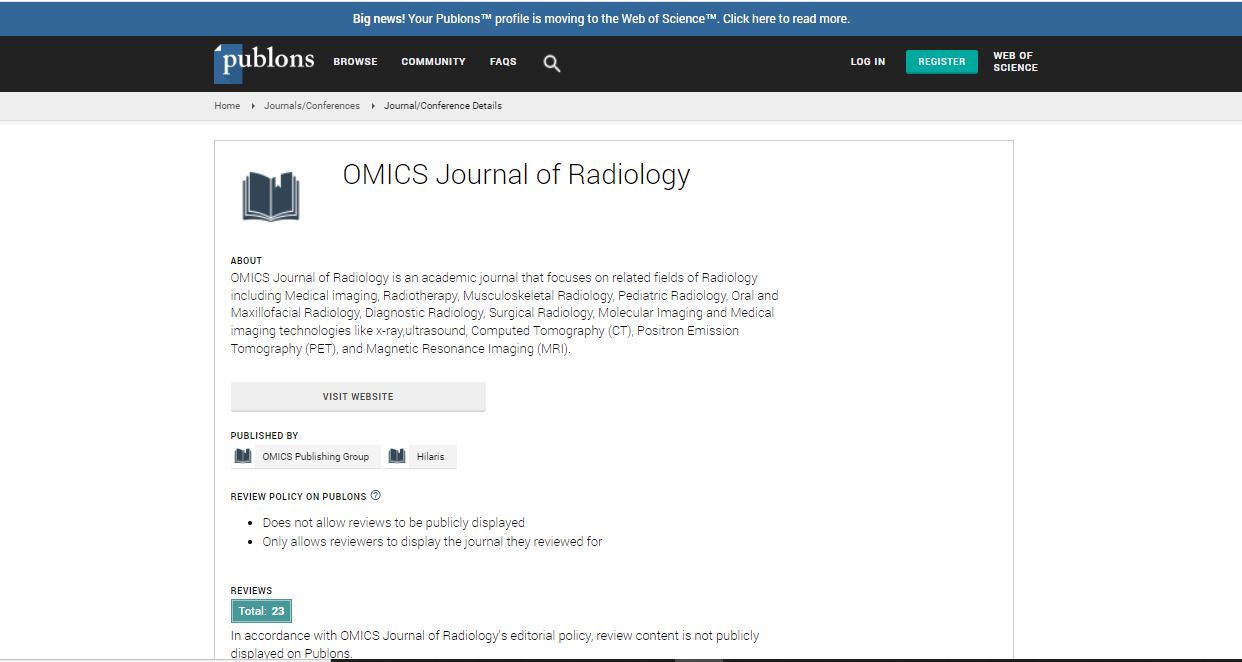Our Group organises 3000+ Global Conferenceseries Events every year across USA, Europe & Asia with support from 1000 more scientific Societies and Publishes 700+ Open Access Journals which contains over 50000 eminent personalities, reputed scientists as editorial board members.
Open Access Journals gaining more Readers and Citations
700 Journals and 15,000,000 Readers Each Journal is getting 25,000+ Readers
Google Scholar citation report
Citations : 551
Journal of Radiology received 551 citations as per Google Scholar report
Journal of Radiology peer review process verified at publons
Indexed In
- Index Copernicus
- Google Scholar
- Open J Gate
- Genamics JournalSeek
- ResearchBible
- Electronic Journals Library
- RefSeek
- Hamdard University
- EBSCO A-Z
- OCLC- WorldCat
- SWB online catalog
- Virtual Library of Biology (vifabio)
- Publons
- Geneva Foundation for Medical Education and Research
- ICMJE
Useful Links
Share This Page
Study on the necessity of graphs in patients with trauma and some related factors in Imam Khomeini Hospital of Sari in 2013
3rd International Conference on Radiology and Imaging
Alireza Khorrami Moghaddam and Hossein Amirfakhryan
Mazandaran University of Medical Sciences, Iran
Posters-Accepted Abstracts: OMICS J Radiol
Abstract
Introduction: Trauma is defined as any injury or harm which is caused by the collision of physical and chemical agents with body tissues. The accident patients due to their traumatic conditions are prescribed multiple graphs by their physician and because of theses multiple graphs; they are exposed to x-ray frequently which imposed some risks to them. This study deals with the necessity of these graphs in trauma patients. Methods: This study was a descriptive cross-sectional study which examined the requests of patients to the radiology department of Imam Hospital with a sample of 186 participants├ó┬?┬? in 1391-1392. The injured organ form the patient├ó┬?┬?s view was specified and after reviewing the correspondence between requests with injured areas and observing the results of graphs, the data were entered into questionnaire forms. Results: In this study, 186 trauma patients were investigated. Of the patients, 67 people (36%) had 5 - 8 graphs and 71 people (38/2 %) had 9-12 graphs. Besides, a total of 1670 patients were performed graph and the average of graphs for each person was 10-11. The most frequent radiography was related to radiography of lower organs with a frequency of 750. Conclusion: The average of graph for each patient was 10-11and by this average number of graph, it could be understood that the received dose of patients is closed to the maximum permissible dose which is announced annually in sources. With comparing the number of necessary graphs with unnecessary ones in trauma patients, it is concluded that these patients undergo some threats during radiography.Biography
Email: ar.khorrami@gmail.com

 Spanish
Spanish  Chinese
Chinese  Russian
Russian  German
German  French
French  Japanese
Japanese  Portuguese
Portuguese  Hindi
Hindi 
